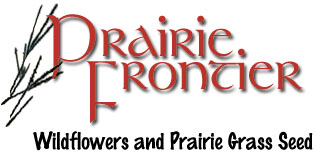
| Blazingstars tend to be colonizing plants that can thrive in degraded or recovering prairies. Well adapted to drought because they have a deep root system for water absorption. | |
| Blazingstar, Thickspike Liatris pycnostachya | 10-12 ft. |
| Goldenrod, Stiff Solidago rigida | up to 5 m. |
| The large root systems of silphiums play an important role in a prairie. Thick taproots can reach depths of 3-4.5 m. and penetrate clay subsoils. | |
| Compass Plant Silphium laciniatum | 12-14 ft. |
| Prairie Dock Silphium terebinthinaceum | 12-14 ft. |
| Cup Plant Silphium pertoliatum | 12-14 ft. |
| Rosin Weed Silphium integrifolium | 12-14 ft. |
| Legume species aid in the soil building process by means of deep penetrating root systems as do the indigos,Baptisia spp.. They have long penetrating roots. Living within the root nodules is a bacteria that will convery inert nitrogen into usable compounds. The nitrogen-fixing bateria are genus-specific for the plant. The deep root systems of legumes help in breaking up clay subsoils. | |
| Big Bluestem Andropogon gerardi | 1.5 - 2.2 m. |
| Indian Grass Sorghastrum nutans | 1.6 - 1.8 m. |
| Little Bluestem Andropogon scoparius | 1.4 - 1.8 m. |
| Porcupine Grass Stipa spartea | 0.7 - 1 m. |
| Prairie Cordgrass Spartina pectinata | 2.5 - 4 m. |
| Prairie Dropseed Sporobolus heterolepis | 1 - 1.7 m. |
| Side Oats Grama Bouteloua curtipendula | 0.5 m. |
| Switch Grass Panicum virgatum | 2 - 3.7 m. |
